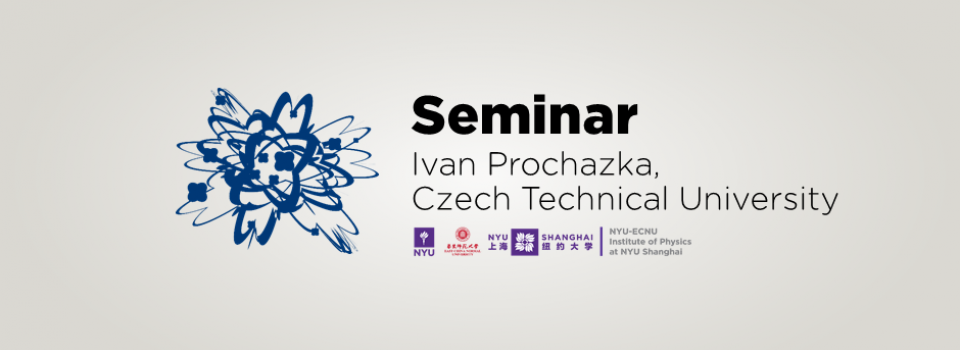
Abstract of the Talk
The research and development of solid state photon counting detectors was initiated by our activities in Satellite Laser Ranging (SLR) in early eighties. The increasing requirements on single shot resolution, timing stability and detection wavelength range extension motivated us to development of Single Photon Avalanche Detection (SPAD) structures. Following the idea of Sergio Cova from Politechnico Milano, Italy, we have developed the first operational detection structures on silicon in 1984. The first SLR echo photons at 532 nm wavelength were detected the same year. The first near infrared echoes were detected in 1986. The critical limitation in use of these detectors in SLR was their small diameter of 25um at that time. A lot of solid state technology experiments were completed in a period of 1984 to 1988. The main goal was to develop a solid state photon counter SPAD based on silicon with an active area diameter equal or exceeding 100um, having acceptable dark count rate and high timing resolution and stability. The final solution was found in a form of K14 structure on silicon. It is a shallow PN junction working as SPAD. Its breakdown voltage is typically 29 Volts. It provides photon detection efficiency exceeding 40 % at the wavelength range of 500 to 800 nm. The detection structures of circular aperture of diameter 25, 100 and 200 um are available. Since that time a permanent effort is put on research and development of active quenching and gating circuit, which is needed for correct operation of these detection structures. For each particular application the control circuit was optimized to obtain the best device performance. To reduce the effective dark count rate of the photon counting devices based on SPADs, the detection chips are thermoelectrically cooled. In parallel the application of detection structures based on other semiconductor materials were investigated. The photon counting detectors based on GaAs, GaP, GaAsP, InGaAs and Ge were developed and successfully used in various applications within the last decades. They do cover and extremely broad wavelength range from soft X-ray up to 1900 nm. Recently we are focusing on research and development of K14 based photon counters optimized for SLR and for laser time transfer in space related applications. The single shot resolution of our detectors are in a range of 15 to 20 ps, their ultimate precision expressed as TDEV is well below 100fs. Their long term stability and temperature drifts are in femtosecond region. The detectors based on K14 structures are highly radiation resistant. Detector package qualified for space operation were developed. In total 13 of our photon counting detectors were launched to space on board of various space missions. For applications preferring high quantum efficiency or near infrared wavelength we are developing complete detector devices based on detection structures developed by other groups.
Biography of the Speaker
Ivan Prochazka received his Ph.D. in applied physics (1984) and became a professor (2003), both at the Czech Technical University in Prague. He was working in numerous laboratories and universities worldwide both in experimental work and teaching (Egypt ’80, Italy 1992, Japan 1994-97, Austria 1991, Germany 1999-2002, UK 1990, China 1997 and others). He has been involved in satellite laser ranging and related technologies since 1974. His main field of interest is picoseconds timing techniques, laser ranging instrumentation, low light level detector technology. He has been a PI of a dozen of government projects related to solid state photon counters research and development, application of solid state photon counters in space and development of new photon counting diagnostics and measurements techniques. The laser altimeter and compact Lidar developed in his lab have been installed on board of deep space mission MARS 96 (Russia) and NASA Mars Polar Lander 98 (USA). Recently, his main interest is related to photon counting applications in laser time transfer ground to space and to picosecond timing techniques. His photon counting detectors operate on a joint NASA and CNES mission Jason2-T2L2 and on a Compass network of GNNS satellite operated by China. In total 13 solid state photon counting detectors have been launched to space till now. For European Space Agency he did propose and his lab has built the detector for the European Laser Timing ELT-ACES project. Recently his hardware R & D is concentrated on devices and measuring techniques for laser ranging and laser time transfer with ultimate precision, stability and accuracy. The key components of measurement chains are photon counting detectors and timing systems. The unique solid state photon counting detectors provide several picoseconds single shot resolution and sub-picosecond timing stability. Space qualified versions of such detectors have been developed. To be able to measure time and time intervals in all the experiments a new epoch timing device has been developed and tested in his laboratory. It provides sub-ps single shot timing resolution and fs long term stability. The unique detectors and timing devices are used for experiments in satellite laser ranging, laser time transfer and similar.


